5 conclusions from the 2021 Giro d'Italia
Bernal's early mastery, Evenepoel's turning point, Yates' third-week onslaught and Caruso the pride of Italy
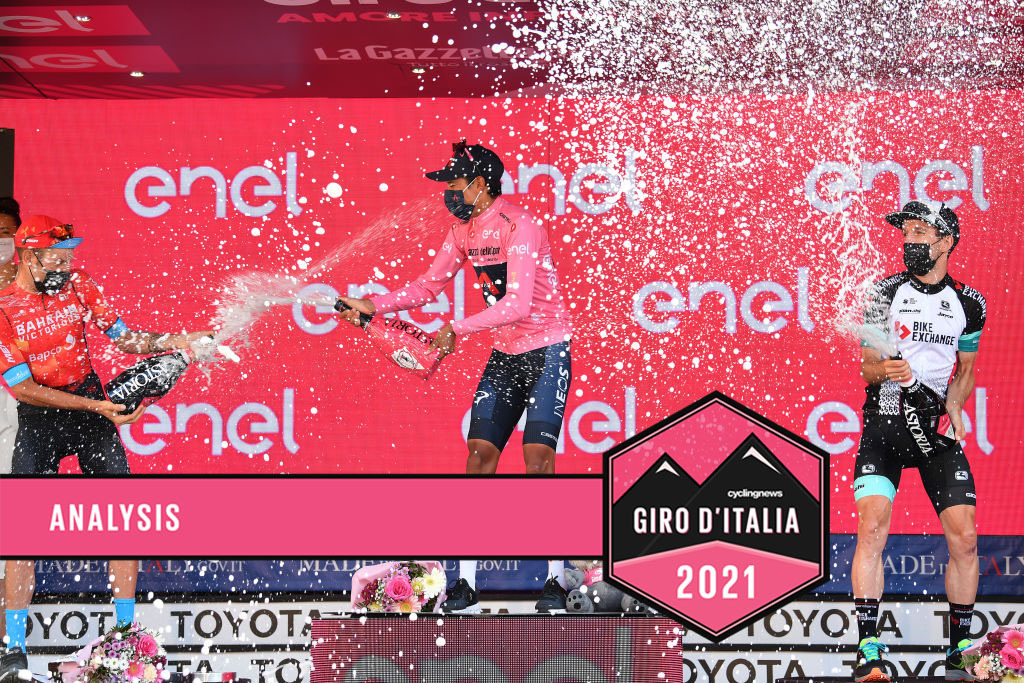
As the dust settles on the 2021 Giro d’Italia, the emotions of three weeks of intense and highly entertaining racing combine to paint a broader picture. This year’s Corsa Rosa ended in victory for Egan Bernal and Ineos Grenadiers, with the young Colombian getting his career back on track after his injuries and personal doubts from the last 18 months.
Bernal's Tour-Giro double at just 24 confirms his place amongst the greats of the sport, alongside Gino Bartali, Felice Gimondi, and Eddy Merckx, who also won both races before they were 25. Now Bernal wants to miss the Tour de France and target the Vuelta a Espana, to completes his Grand Tour palmares.
The 21 stages of this year's Giro d'Italia offered daily storylines, with the breakaways often succeeding and so creating unlikely heroes and first-time Grand Tour stage winners like Taco Van Der Hoorn, Joe Dombrowski, Victor Campenaerts, Lorenzo Fortunato, and Alberto Bettiol.
Bernal constructed his overall victory on the spectacular strade bianche of Tuscany and then on the climbs above the snow line of the Zoncolan and Passo Giau. Simon Yates and Damiano Caurso rose to challenge him only for Bernal, and especially Ineos, to hold their nerve all the way to Milan.
Egan Bernal's fast start rewrites the maglia rosa script
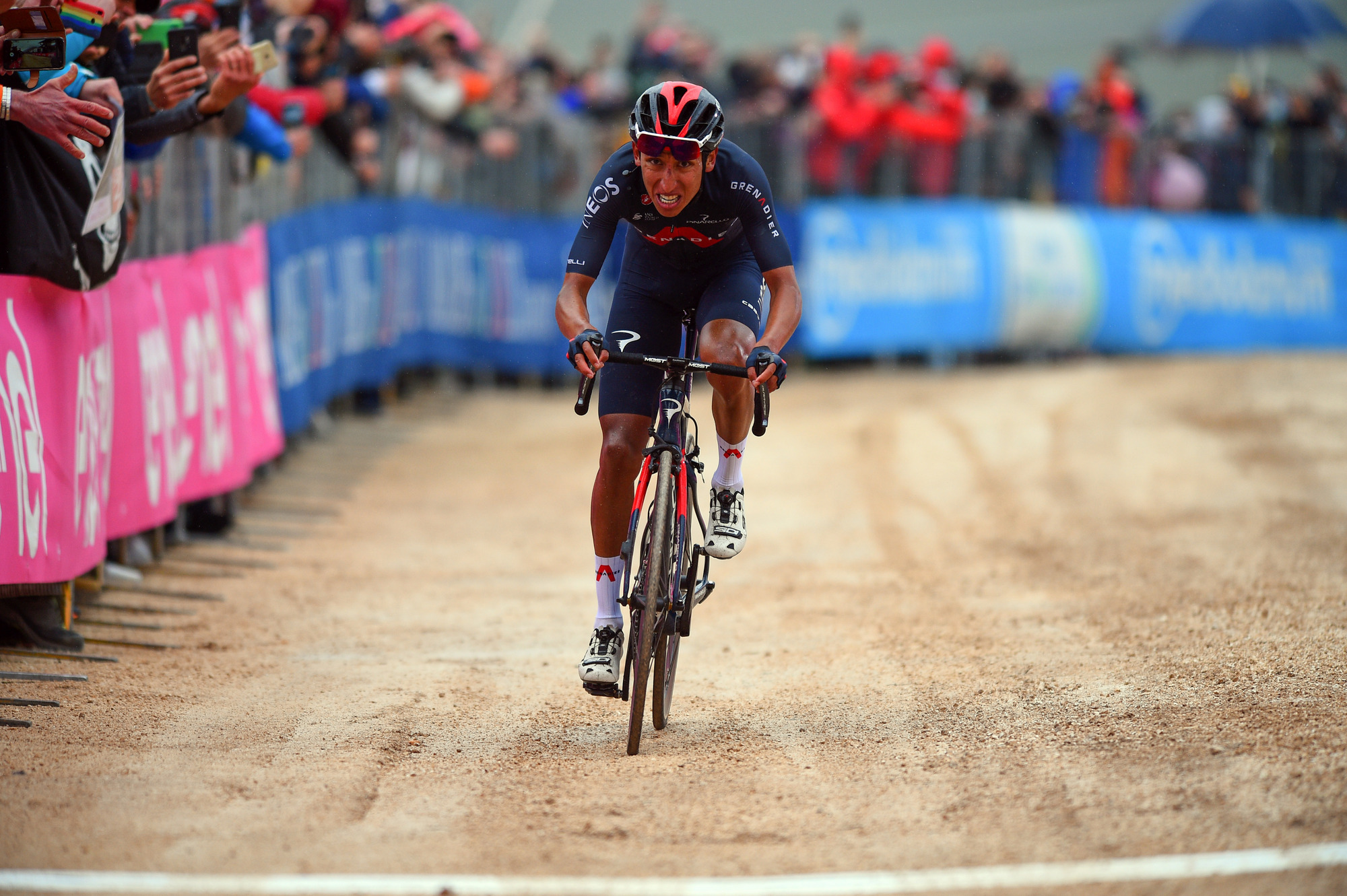
Near the summit of Campo Felice, after tarmac had given way to gravel at the end of stage 9, Giulio Ciccone watched Egan Bernal’s chain shift into the big ring and he immediately understood the direction of travel. In the hilltop skirmishes of the opening week, there had been relatively little to separate the overall contenders.
The margins were still tight but the message was clear: Bernal was the strongest rider at this Giro d’Italia. He may have stumbled in the final mountain stages but he never faltered and then triumphed in Milan.
It wasn’t supposed to happen like this. Bernal had eschewed the Tour of the Alps ahead of the race in favour of a long stint at altitude in Colombia, making clear that he was still troubled by the back injury that had grounded his Tour de France defence early last September.
Get The Leadout Newsletter
The latest race content, interviews, features, reviews and expert buying guides, direct to your inbox!
Ineos teammate Pavel Sivakov began the Giro with GC ambitions of his own, while Bernal was circumspect about his own prospects, speaking about the “long process” of rediscovering “that old sparkle and confidence.”
The inference was that Bernal’s strategy was built around taking flight in the onerous final week, but instead he hit cruising speed almost immediately, tracking the moves on the first, minor GC shake-up at Sestola on stage 4. Two days later, Ineos whittled down the peloton on the rugged road to Ascoli before Bernal unleashed an acceleration on the climb to San Giacomo. By Campo Felice, he was already in pink.
Between the two rest days, Bernal was almost in a race of his own. Exhibitions on the gravel at Montalcino, in the final kilometre of the Zoncolan and over the Passo Giau saw his lead yawn out to 2:44, with the bulk of his rivals more than four minutes back.
Bernal’s dominance was such that he could afford to fritter away seconds by slowing to take off his jacket and display the maglia rosa at Cortina d’Ampezzo.
The great truism of the modern Giro is that the race is only ever decided in the third week, but Bernal offered a firm contradiction by performing the bulk of his heavy lifting in the opening two-thirds.
Of course, the final days still provided frissons. With those climbs, how could they not? Simon Yates’ late rally and Caruso’s invention on stage 20 provided Bernal with a couple of serious scares, but the sizeable buffer built up by his fast start meant that the threats were manageable. And it helped, too, that Bernal could rely on a rider of Dani Martinez’s quality (fifth overall in Milan) as a most reliable gregario.
“Before the start, I thought I might lose a little bit early on and I thought I’d be trying to gain time at this point,” Bernal said after mitigating Yates’ onslaught at Alpe di Mera. “Instead, it’s been the complete opposite.” (BR)
A shortened Queen stage did not short change the Giro
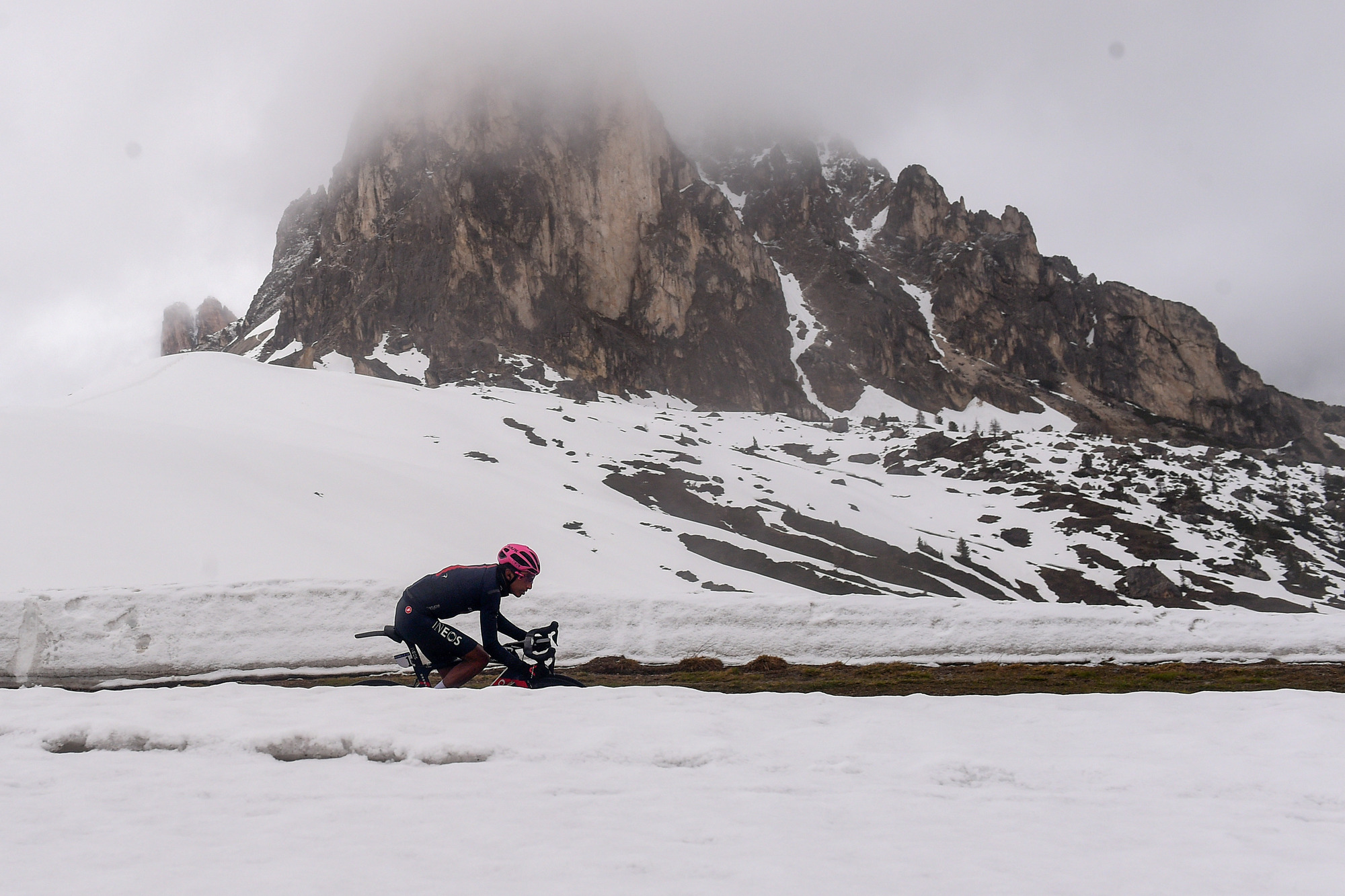
The sight of CPA riders’ representative Cristiano Salvato in discussions with race director Mauro Vegni in Sacile ahead of stage 16 brought back memories of the impromptu negotiations that saw the long, flat leg to Asti halved in such contentious circumstances during the final week of last October’s Giro d’Italia.
This time out, consensus was the order of the day. The lines of communication between the CPA and RCS Sport had been open during the 48 hours before the Dolomite tappone and with reports of plummeting temperatures and snow atop the Pordoi and Fedaia, a decision had to be made.
The stage could have gone ahead as planned and seemingly without breaching the (blurred) letter of the UCI Extreme Weather Protocol, but it was a risk that would surely have contravened its spirit. Contrary to some of the more bombastic commentary that followed, professional bike riders are neither heroes nor gladiators, but human beings whose working conditions are hazardous enough at the best of times. The decision to remove the Pordoi and Fedaia was a sound one. Vegni may not have liked it, but he knew he had to go along with it.
Most critics of the decision to shorten the tappone reached, with grim predictably, for the counterpoint of the Gavia in 1988. They seemed to ignore that the stage was just 120km in length and featured just one short climb and descent – Aprica – before the snowbound haul over the Gavia. Had stage 16 run its full course this year, riders would have faced frigid descents off the Pordoi, Fedaia and Giau on a day with 5,700 metres of climbing.
That stage in those conditions would of course have entered into the legend of the Giro, but at what cost? Cycling’s heritage must be protected, but that doesn’t mean some of its unhealthy legends can’t be challenged along the way.
“I was on the Gavia in 1988 and I don’t want to see something like that again, because it’s not cycling. It’s not even sport,” Astana Premier Tech directeur sportif Giuseppe Martinelli told Tuttobici.
Even without the Pordoi and Fedaia, the stage turned out to be both arduous and decisive, with Bernal soloing clear on the Giau to place another hefty deposit on final victory in Milan.
Riders drifted home in ones and twos behind him, their faces haunted. Were we not entertained?
“As bike racers want to race our bikes, but we want to do it in safe conditions,” Dan Martin told Cyclingnews. “And we still ended up with a really good bike. That stage pretty much decided the Giro.”
And yet even while the compromise between RCS Sport and the riders was both sensible and successful, it raises significant questions for the Giro.
With the climate crisis ever more evident, will the race have to forgo multiple high altitude passes in the future? Or could the Giro shift to a slightly later date? As recently as the mid-90s, after all, the race used to finish in the middle of June. That discussion, at least, is well worth having. (BR)
Remco Evenepoel's turning point

As the peloton of Giro favourites disappeared into a cloud of dust and grit in the sterrato of Tuscany and Deceuninck-Quick Step teammate Joao Almeida, showed a brief but marked ambivalence about offering support, Remco Evenepoel summed up his desperation and frustration with a single, telling gesture: he ripped out his ear-piece.
There had been some setbacks before, like on the sharply inclined Colle Passerino, the first real climb of the Giro, where the young Belgian star had lost a handful of seconds, not yet back to handling racing’s fiercest accelerations after nine months out of the action.
Then there was ‘the tunnel incident’ en route to Campo Felice, when just ahead of him Egan Bernal and an Ineos-Grenadiers teammate had touched wheels, and Evenepoel had found himself forced to drop back and unable to regain enough positions to claim a top result.
However it was an anonymous cart-track somewhere in deepest Tuscany that Evenepoel’s frustration at his suddenly dire predicament took over. It was time to disconnect from the team car’s babble of instructions and information and go it alone, even as he lost time any hope of overall success.
HIs moment of disillusionment was probably all the harsher given the speed with which his Giro started to unravel. Just 24 hours easier Evenepoel had been marvelling during his press conference at how he was still second overall and still only 14 seconds off the pace behind leader Egan Bernal (Ineos-Grenadiers) in his first race in nine months, and, let’s not forget, his first Grand Tour.
His bizarre intermediate sprint for a couple of seconds with the Colombian the day before had been held up to the light and pored over by the small army of Belgian journalists at the Giro to follow his every move. There had even been a question from a reporter from the Netherlands about whether he could win the Giro or not, which Remco’s good-humoured reaction - ‘that’s a very Dutch question’ - showed it wasn’t a totally unwelcome enquiry.
But ultimately the second part of Evenepoel’s answer to his chances of Giro victory summed up the eventual conclusions drawn from his Giro performance: “Not a yes. Not a no. That’s a maybe.”
And after his two-minute loss at Montalcino, the 90-second gap on the Zoncolan, then 24 minutes on Cortina d’Ampezzo, followed by a brutal downhill crash on stage 17 and ultimate exit from the Corsa Rosa, ‘maybe’ remains the only conclusion for now about Evenepoel’s Grand Tour winning potential.
Yet at 21 and his professional career ahead of him, the opportunities to regain his racing momentum and put the earpiece back in for future Grand Tour tests are there in abundance. (AF)
Simon Yates and his third week onslaught
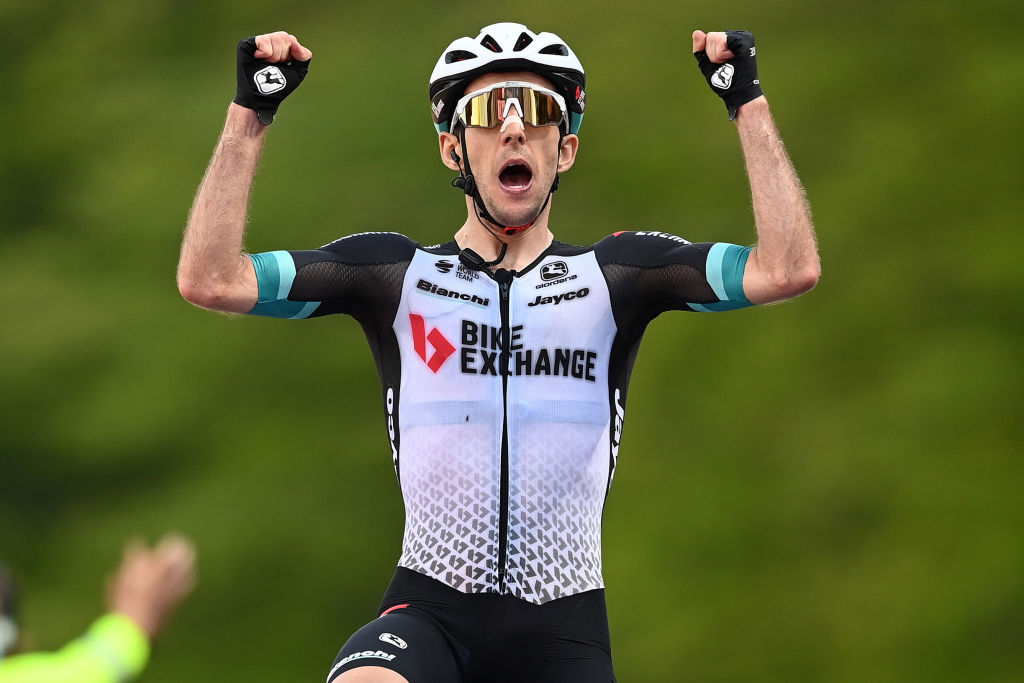
In many senses, the real interest in Simon Yates’ attack on the Sega di Ala had nothing to do with the Briton, and a lot to do with a Colombian in pink, 4:20 ahead of Yates on GC and seemingly unreachable with only four stages left to race.
With one rasping attack, on the agonisingly steep slopes of Sega di Ala, Yates breathed life into the Giro GC battle and his own overall ambitions, which up to that point had increasingly seemed limited and lifeless.
Until four kilometres to go on the Sega di Ala climb on stage 17 there had been only one real narrative to the story of the maglia rosa in 2021. Despite all the question marks about Egan Bernal’s back prior to the Giro d’Italia, he and Ineos Grenadiers had not made a single mistake, and his rise into the lead had seemed all but unstoppable. The GC battle had taken on all the feel of a procession in the most wearily familiar style of Chris Froome’s wins in the Tour de France.
Yates’ attack, and above all its consequences, changed that scenario in an instant. Yes, he was so far off on GC that a 50 seconds time gain did not make winning the Giro realistic. And yes, Bernal only lost three seconds to closest rival Damiano Caruso, (Bahain Victorious) at the finish.
Bernal suddenly began talking about Yates as a rider who was stronger than him, and such was Yates’ strength that Bernal switched from his imperious approach in Cortina d’Ampezzo to looking helpless and desperately trying to follow Dani Martinez as his teammate urged him on.
Rather than time losses or gains, Bernal’s plunge into vulnerability had been so sudden and marked, too, that there was seemingly no knowing how deep he could fall. Yates, albeit only for a day, Yates became the kingmaker in the Giro. It did not last until Milan but it was special to watch. (AF)
Damiano Caruso: the pride of Italy
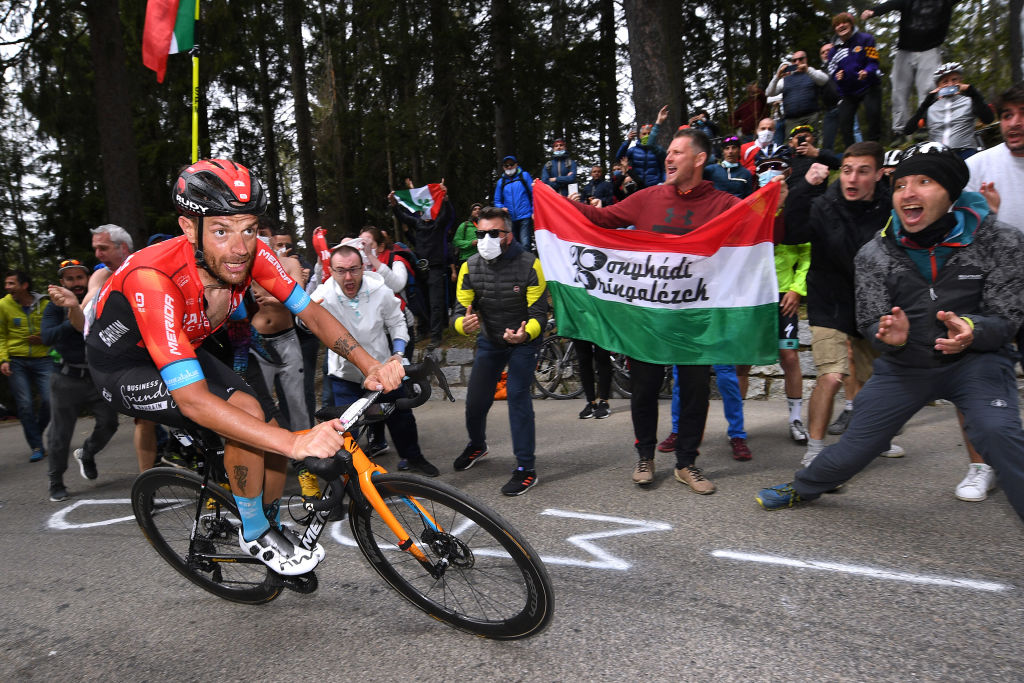
Italy celebrated Damiano Caruso’s (Bahrain Victorious) second place overall at the Giro d’Italia almost like a victory, the Sicilian saving national pride after Vincenzo Nibali’s (Trek-Segafredo) race floundered day after day and Giulio Ciccone (Trek-Segafredo) struggled, crashed, and eventually abandoned the race.
Caruso’s podium place gave everyone in Italy a feel-good story that is so comforting in these difficult times. The 33-year-old Sicilian transformed from a humble, hard-working domestique to a team leader and a Giro d’Italia podium finisher. Even the good guy, the modest guy, the hard-working guy – who prefers to live in Sicily rather than in a tax haven – gets their day in the spotlight eventually.
Caruso’s chance arose when Mikel Landa crashed out and this time, instead of feeling the weight of responsibility on his shoulders, Caruso embraced it all and emerged as Bernal’s biggest challenger. The record books will show he finished just 1:29 down on the Colombian, with Bernal admitting that Caruso’s stage 20 attack was the moment he was most afraid of losing the maglia rosa.
Thanks to Filippo Ganna (Ineos Grenadiers), Andrea Vendrame (AG2R Citroën Team), Giacomo Nizzolo (Qhubeka Assos), Lorenzo Fortunato (Eolo-Kometa Cycling Team), Alberto Bettiol (EF Education-Nippo) and Caruso, Italy won seven stages. That's a third of all those up for grabs and Alessandro De Marchi (Israel Start–Up Nation) wore the maglia rosa. However with no Italian WorldTour team, the Italian tifosi have been left without a team to cheer for in their home Grand Tour. Caruso changed that.
His stage win at Alpe Motta gave him a day of glory but his second place will surely give him and Italian cycling the conviction needed to move on from the Nibali years and try to build the next generation of their sport. (SF)

Barry Ryan was Head of Features at Cyclingnews. He has covered professional cycling since 2010, reporting from the Tour de France, Giro d’Italia and events from Argentina to Japan. His writing has appeared in The Independent, Procycling and Cycling Plus. He is the author of The Ascent: Sean Kelly, Stephen Roche and the Rise of Irish Cycling’s Golden Generation, published by Gill Books.